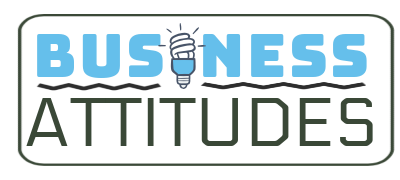Validate Your Business Idea: A Comprehensive Guide
If you have a business idea, it’s crucial to validate it before investing significant time and resources. This article will guide you through the process of validating your business idea, ensuring you’re on the right track before taking it to market.
Research and Analysis: The Foundation of Validation The first step in validating your business idea is conducting thorough research and analysis. This involves understanding the market landscape, identifying your target audience, and analyzing the competition. Start by gathering data from industry reports, market studies, and online sources to get a comprehensive view of the market size, growth potential, and emerging trends. Analyze your competitors’ strengths, weaknesses, and positioning to identify gaps or opportunities for your idea. Additionally, create customer personas and conduct surveys or interviews to gain insights into your potential customers’ needs, pain points, and preferences.
Identify a Niche and Target Market
One of the keys to success is finding a specific niche and understanding your target market. Conduct market research to identify unmet needs or pain points that your product or service can address. Look for a niche that is underserved or overlooked by existing players in the market. This will help you refine your offering and position it effectively in the market. Define your target audience based on demographics, psychographics, and behavior patterns, and tailor your solution to their specific needs.
Create a Proof of Concept Developing a proof of concept is essential in validating your business idea. This involves creating a minimal viable product (MVP) or a prototype that you can use to test your concept with potential customers. An MVP is a basic version of your product or service with just enough features to demonstrate its core value proposition. A prototype, on the other hand, is a physical or digital representation of your product that allows users to interact with it. Gather feedback from your target audience by conducting user testing, focus groups, or online surveys. Analyze their responses to understand what they like and dislike and what improvements they suggest. Use this feedback to refine and iterate your concept until you have a solid product-market fit.
Avoid Common Pitfalls In over twenty years of experience, two common pitfalls have been observed: jumping straight into marketing a product or service without proper validation and taking out loans for an unvalidated business idea. Avoid these pitfalls by following a structured validation process and securing funding only after confirming the viability of your idea. Rushing to market without validation can lead to wasted resources, missed opportunities, and even failure. Similarly, taking on debt for an untested idea can put you in a precarious financial position.
Embrace Critical and Logical Thinking Throughout the validation process, it’s crucial to apply critical and logical thinking. Approach your idea objectively, challenge assumptions, and be open to pivoting or refining your concept based on the data and feedback you collect. Seek out contrarian viewpoints and embrace constructive criticism, as they can reveal blindspots or flaws in your thinking. Additionally, use logical reasoning and data-driven decision-making to evaluate the feasibility and potential of your idea.
Tools and Methodologies
Leverage proven tools and methodologies to streamline the validation process. Six Sigma principles, such as Define, Measure, Analyze, Improve, and Control (DMAIC), can help you identify and eliminate defects or inefficiencies in your idea, while design thinking methodologies like empathy mapping, ideation, and prototyping can foster innovation and customer-centric solutions. Other useful tools include business model canvases, lean startup principles, and agile development methodologies.
Success Stories Many successful businesses have followed a thorough validation process before launching. For example, Airbnb started as a simple idea to rent out air mattresses, but it became a global hospitality platform through extensive validation and iteration. The founders conducted market research, created a basic website as an MVP, and gathered feedback from early users, which helped them refine their concept and scale the business. Similarly, Dropbox started as a simple file-sharing service but gained traction after validating the idea through a viral video that showcased the product’s benefits.
By following the steps outlined in this article, you can minimize risk, allocate resources effectively, and increase your chances of success when bringing your business idea to market. Remember, validation is an ongoing process, and even after launching, it’s essential to continue gathering feedback and adapting to changing market conditions and customer needs.

